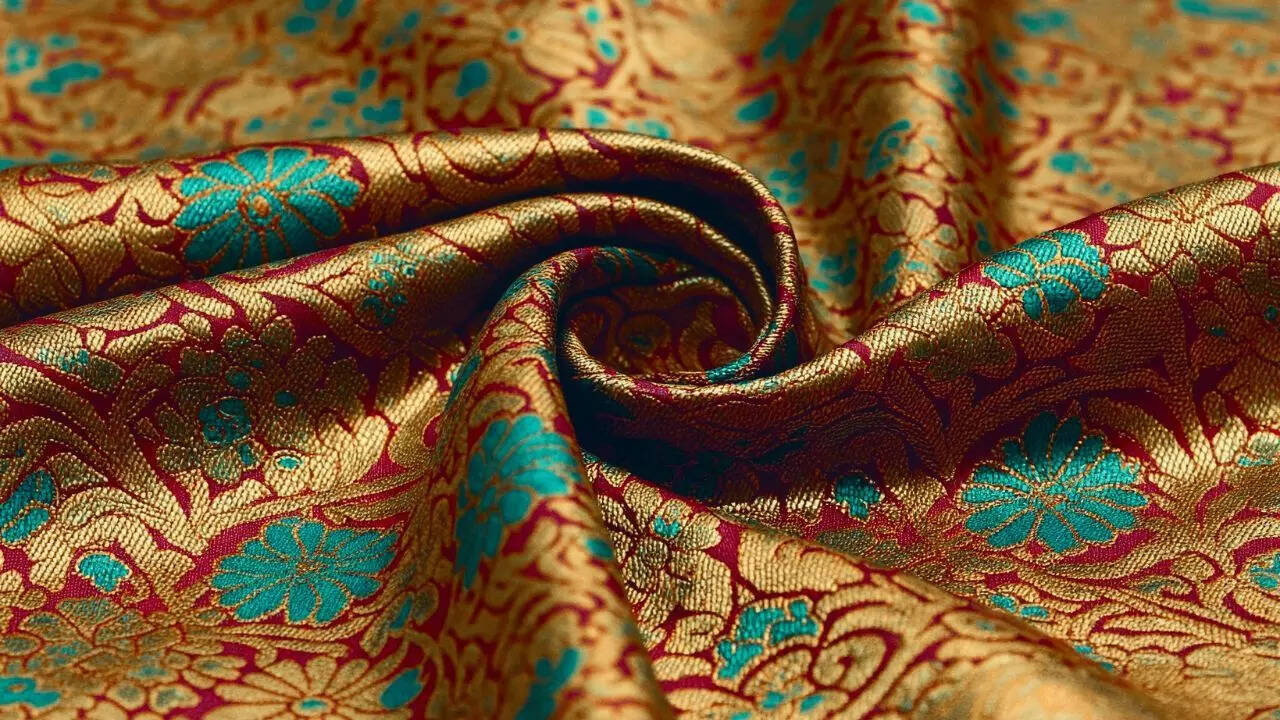Our Terms & Conditions | Our Privacy Policy
No trip to India is complete without buying these unique textiles
India’s textile heritage, a vibrant expression of culture and tradition, offers travelers unique keepsakes. From the regal Banarasi silk of Varanasi to the queenly Kanjeevaram of Tamil Nadu, each fabric tells a story. Explore the delicate Chanderi, intricate Kalamkari, and the tie-dyed Bandhani. India is rich in vibrant cultures and timeless traditions, vividly expressed through its textiles. From exquisite handlooms to magical silks and timeless prints, Indian fabrics are as much about artistry as they are about heritage. For any traveller, taking home a piece of this rich textile tradition is more than just shopping, it’s preserving a story woven over centuries. Here are some textiles that one should not miss at all if travelling to India. Let’s have a look at some of them.
Banarasi Silk

Image: Canva
Originating from Varanasi, Banarasi silk is famed for its regal sheen and intricate zari (gold or silver thread) work. Traditionally woven on handlooms, these sarees are adorned with Mughal-inspired floral and paisley motifs. Considered the ultimate bridal attire, a Banarasi silk saree can take weeks or even months to craft, each piece is an heirloom, admired for both its artistry and opulence.
Kanjeevaram (Kanchipuram) Silk
Kanjeevarams being the crown of Sarees, made women in the states of Tamil Nadu feel like a queen of silks. These fabric pieces are made out of pure mulberry silk and are laden with heavy golden zari and these are as durable as elegant. Often such fabrics are passed on through generations.
Chanderi
Chanderi fabric of Madhya Pradesh is an airy-mixture of silk and cotton weaved with twinkling zari work and embroidery of fine patterns. It is well-known for its translucence and delicate fashionable appearance. Chanderi sarees are made of silk blended with cotton and can be worn both every day and on special occasions.
Kalamkari
Andhra Pradesh and Telangana are known for Kalamkari, the 3,000-year-old hand-printing or block-printing of cloth with natural dyes. The term uses the word kalam and kari, in recognition of its origins in stories utilised in temples that are drawn with pens made of bamboo or block-cutters. The principal regional styles are Srikalahasti and Machilipatnam which are registered as geographical indications. The art form is known to be extremely detailed, story rich, and environmentally friendly.
Ikat
A method more than a fabric, Ikat is created in Gujarat, Telangana, Andhra Pradesh and Odisha. Before weaving, the threads are tie-dyed, giving the characteristic pattern of blurred, geometrical sceneries. The result is bright, stylistically rich, and it displays the technical expertise of Indian craftspeople.
Pashmina
Pashmina is the undercoat of the Himalayan goats that are found in Kashmir region. This fine soft wool is also hand spun and hand woven into shawls that are legendary in their cosiness and feather-like light weight and also the beautiful paisley or floral embroidery. Genuine or true Pashmina is a precious memory piece, a combination of style and substance.
Chikankari
Originally from Lucknow, Uttar Pradesh. Chikankari is a delicate and artful embroidery technique, typically white-on-white, creating ethereal, feminine kurtas and sarees. Each piece is painstakingly hand-embroidered, making every garment distinctive and full of character.
Bandhani
Bandhani originated from the states of Gujarat and Rajasthan. Bandhani is India’s signature tie-and-dye tradition, easily identified by its dazzling dots and patterns. Commonly used in sarees, turbans, and dupattas, Bandhani is a riot of colours that is festive, traditional, and instantly recognisable.
Images are for reference only.Images and contents gathered automatic from google or 3rd party sources.All rights on the images and contents are with their legal original owners.



Comments are closed.